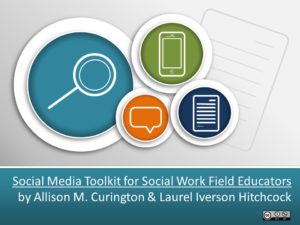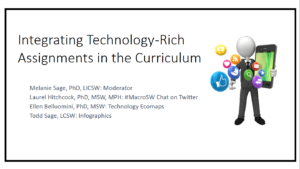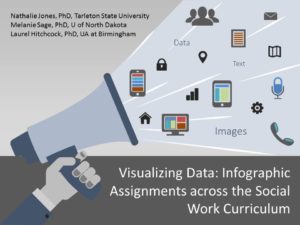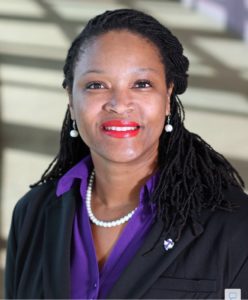Social Media Toolkit for Social Work Field Educators – Get your Free Copy!
 We are pleased to announce the availability of the Social Media Toolkit for Social Work Field Educators. This toolkit provides Field and other Social Work Educators with tools and resources to help social work students and field instructors assess, develop, and maintain an online identity for professional purposes. There are two parts to the toolkit – an Educator’s Guide and a PowerPoint Slide Deck. The Educator’s Guide provides directions, descriptions, and handouts related to the content of the toolkit while the Slide Deck includes pre-formatted slides with selected content for presenting n the classroom or a workshop. Content in this toolkit can be easily adapted to agency-level continuing education.
We are pleased to announce the availability of the Social Media Toolkit for Social Work Field Educators. This toolkit provides Field and other Social Work Educators with tools and resources to help social work students and field instructors assess, develop, and maintain an online identity for professional purposes. There are two parts to the toolkit – an Educator’s Guide and a PowerPoint Slide Deck. The Educator’s Guide provides directions, descriptions, and handouts related to the content of the toolkit while the Slide Deck includes pre-formatted slides with selected content for presenting n the classroom or a workshop. Content in this toolkit can be easily adapted to agency-level continuing education.
The content of this toolkit is divided into five different topics centered on how to use social media professionally as a social worker:
– Reflecting on Social Media Use in Social Work Practice
– Engaging and Self-Assessment with Social Media
– Professional Practice with Social Media
– Case Studies for Students & Field Educators
– Social Media Learning Activities for Field Education
Teaching Technology-Mediated Practice in a Clinical MSW Program
 Janet Vizina-Roubal, DSW, MSW, is an Associate Professor of Social Work at Ferris State University in the Department of Social Work. In this blog post, she writes about her inspiration for a technology-mediated practice assignment with MSW students. Assignments like this one will be increasingly valuable for social work students preparing to use technology with clients while meeting professional and ethical practice standards such as the NASW Code of Ethics and the NASW, ABSW, CSWE & ACSW Standards for Technology in Social Work Practice. If you have questions about the assignment, you can reach Dr. Vizina-Roubal on Twitter at @jvizina.
Janet Vizina-Roubal, DSW, MSW, is an Associate Professor of Social Work at Ferris State University in the Department of Social Work. In this blog post, she writes about her inspiration for a technology-mediated practice assignment with MSW students. Assignments like this one will be increasingly valuable for social work students preparing to use technology with clients while meeting professional and ethical practice standards such as the NASW Code of Ethics and the NASW, ABSW, CSWE & ACSW Standards for Technology in Social Work Practice. If you have questions about the assignment, you can reach Dr. Vizina-Roubal on Twitter at @jvizina.
I started teaching my first clinical MSW course the fall of 2014 with excitement and nervousness. With almost eight years of clinical experience in school social work and outpatient therapy, I had a great toolbox of practice tips to share with my students. Adding to the excitement was the idea of creating a technology-based assignment where students could learn and practice technology-enhanced therapy skills. Because I had completed and presented research with a colleague about the benefits of using iPhones in child welfare work, I was curious about how I could create a technology-based assignment for MSW social work students.
Clinical MSW social work classes typically rely on a vast amount of face-to-face role-plays, requiring students to play the part of client and social worker. This experiential learning is challenging, however is very effective at teaching students critical clinical skills. I was interested in stretching this experiential learning process into role-plays for a technology-mediated learning environment, with the goal of helping students learn how to engage with clients via technology-based communication tools. Based on this idea, I worked to structure assignments that would allow students to learn how to use technology within clinical social work. As I embarked on this journey, I searched for curricula or assignments on how to teach online therapy along with best practices. Bewildered, I found almost nothing (Cardenas, Serrano, Flores, & De 2008). I did stumble upon research that showed promising findings that online therapy might be as effective as face-to-face therapy (Chester & Glass, 2006; Dowling & Rickwood, 2013; Holmes & Foster, 2012). This finding legitimized my interest in pursuing this course of instruction and compelled me to develop assignments where students gained experience within online therapy; practicing as the client as well as the therapist.
FERPA & Social Media: Thoughts for Social Work Education
 What about FERPA? This is one of the most common questions I hear when presenting about using social media in the classroom. FERPA, the Family Educational Rights and Privacy Act, is the US federal law that protects the privacy of students’ educational record, and ensures that students have some control over their records. Examples of what is included in an educational record at the post-secondary level include grades, transcripts, class lists, student course schedules, and student financial information. Social work educators are often very aware of privacy and disclosure of personally identifiable information because of our practice backgrounds and the NASW Code of Ethics, so FERPA makes sense to us. It is understood that we should abide by FERPA and our professional standards of privacy and informed consent while modelling appropriate ethical standards for our students. However, this does not mean that social media is off-limits as an educational and professional development tool (Drake, 2014). Rather it means that as social work educators, we can use social media with students as long as we do so in ethical and legal ways (Rodriguez, 2011).
What about FERPA? This is one of the most common questions I hear when presenting about using social media in the classroom. FERPA, the Family Educational Rights and Privacy Act, is the US federal law that protects the privacy of students’ educational record, and ensures that students have some control over their records. Examples of what is included in an educational record at the post-secondary level include grades, transcripts, class lists, student course schedules, and student financial information. Social work educators are often very aware of privacy and disclosure of personally identifiable information because of our practice backgrounds and the NASW Code of Ethics, so FERPA makes sense to us. It is understood that we should abide by FERPA and our professional standards of privacy and informed consent while modelling appropriate ethical standards for our students. However, this does not mean that social media is off-limits as an educational and professional development tool (Drake, 2014). Rather it means that as social work educators, we can use social media with students as long as we do so in ethical and legal ways (Rodriguez, 2011).
The purpose of this post is to provide some examples and best practices for FERPA-compliant social media assignments based on my understanding and experiences, and insights from colleagues. As with any ethical challenge, there are no black or white answers, but it is my hope that information in this post will provide insight on how social work educators can embrace the benefits of social media assignments while being mindful of the risks. And there are many benefits to using social media as social workers such as contributing to public conversations, building relationships with other practitioners, and staying current on news and research. Further, helping social work students develop the values and skills to professionally and ethically use social media is included in Council of Social Work Education’s 2015 Educational Policy and Accreditation Standards.
Here are ways I work to ensure that I am being ethical and professional with social media in the classroom:
Day Two of #SWDE2017 – Integrating Technology-rich Assignments in the Curriculum
 From April 12-14, 2017, the third annual Social Work Distance Education Conference was sponsored by Our Lady of the Lake University’s Worden School of Social Service in San Antonio, TX.
From April 12-14, 2017, the third annual Social Work Distance Education Conference was sponsored by Our Lady of the Lake University’s Worden School of Social Service in San Antonio, TX.
Melanie Sage & Todd Sage of the University of North Dakota, Ellen Belluomini of Dominican University, and I participated in a panel discussion about incorporating technology-based assignments in the social social work curriculum. We talked about three different types of technology-based assignments that can be incorporated into almost any classroom: Twitter Chats, Technology Assessments, and Infographics.
You can access a copy of the slides here: https://www.slideshare.net/laurelhitchcock/integrating-technologyrich-assignments-in-the-curriculum. We also have some assignment specific resources:
#BPDNOLA17 – Visualizing Data: Infographic Assignments across the Social Work Curriculum
 Today is the third day (Friday, March 3rd) of #BPDNOLA17, and I am presenting with some of my favorite #swtech peeps, Dr. Nathalie Jones of Tarleton State University and Dr. Melanie Sage of the University of North Dakota, at 1:45pm in Bayside C at the Sheraton in New Orleans. We will be talking about an infographic assignment that we jointly developed and implemented with students at each of our campuses. The use of infographics for classroom assignments is becoming commonplace in higher education, although less is known about its use in social work education. Our workshop will review how we collaborated to develop, implement and evaluate an infographic assignment for courses across the social work curriculum.
Today is the third day (Friday, March 3rd) of #BPDNOLA17, and I am presenting with some of my favorite #swtech peeps, Dr. Nathalie Jones of Tarleton State University and Dr. Melanie Sage of the University of North Dakota, at 1:45pm in Bayside C at the Sheraton in New Orleans. We will be talking about an infographic assignment that we jointly developed and implemented with students at each of our campuses. The use of infographics for classroom assignments is becoming commonplace in higher education, although less is known about its use in social work education. Our workshop will review how we collaborated to develop, implement and evaluate an infographic assignment for courses across the social work curriculum.
Teaching with Infographics: My experiences with digital literacy and non-traditional students
Nathalie P. Jones, PhD, MSW is an Assistant Professor of Social Work at Tarleton State University. In this blog post, Dr. Jones writes about her experiences creating and implementing an infographic assignment with nontraditional social work students.
As an Assistant Professor of Social Work at Tarleton State University, I have absolutely enjoyed educating social work students on the use of technology through macro social work practice courses. I teach a large number of non-traditional learners (those who have been out of school for longer than one year, and are employed, parenting, or in any other roles that are competing with being a learner as defined by the National Center for Education Statistics [2015]). I find that they develop student groups quickly in order to have support while working on assignments, especially those assignments that include the use of digital technology.
To help my students improve their understanding of digital and social technology, I have introduced the use of infographics during an advanced social work course entitled Women’s Issues. Infographics are visual representations of almost any type of information. Infographics are similar to storytelling with visual content and supported with statistical data. They are an effective way to communicate large amounts of information in a clear and succinct way, and are an increasingly popular tool in popular media and the non-profit world (NonProfit Tech for Good, 2014). Understanding how to create, share and evaluate infographics is a key digital literacy skill for social workers (Shelly, 2015). Along with all these benefits, I wanted to create an assignment that was fun and engaging for my nontraditional students who are often nervous about nontraditional, digital assignments.
For the Women’s Issues course, I asked students to research an issue or social problem affecting women, turn that research into an infographic (rather than a written paper), and then share their infographics with professionals outside of the class as a way to network with alliances who advocate on behalf of women. This meant students needed to not only create a quality artifact for a grade, but also learn how to share it with other advocates in a public way – via social media. In an effort to support learners who were experiencing technology in college for the first time, I provided them with seven detailed steps to successfully complete the infographic assignment. These steps involved learning about Twitter as well as creating an infographic.
Here are the assignment steps directly from the course syllabus:
Step 1: Create a Twitter Account & provide your Twitter Handle. *Don’t forget to follow the instructor.
Step 2: Research & provide a resource of two infographics (1) from the web and (1) from Twitter related to Women’s Issues. Then, provide a 1-2 page comparison on how the infographic was distributed, what was learned & why this is a resource for issues related to women.



